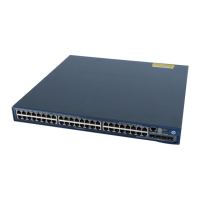132
Voice VLAN configuration
Overview
A voice VLAN is configured for voice traffic. After assigning the ports that connect to voice devices to a
voice VLAN, the system automatically configures quality of service (QoS) parameters for voice traffic, to
improve the transmission priority of voice traffic and ensure voice quality.
NOTE:
Common voice devices include IP phones and integrated access devices (IADs). Only IP phones are
used in the voice VLAN configuration examples in this document.
OUI addresses
A device determines whether a received packet is a voice packet by evaluating its source MAC address.
A packet whose source MAC address complies with the Organizationally Unique Identifier (OUI) address
of the voice device is regarded as voice traffic.
You can configure the OUI addresses of a device in advance or use the default OUI addresses. Table 14
lists the default OUI address for each vendor’s devices.
Table 14 The default OUI addresses of different vendors
NOTE:
In general, as the first 24 bits of a MAC address (in binary format), an OUI address is a globally unique
identifier that IEEE assigns to a vendor. In this document, however, OUI addresses are addresses that the system
uses to determine whether a received packet is a voice packet. They are the results of the AND operation of the
arguments
mac-address
and
oui-mask
in the voice vlan mac-address command.
You can remove the default OUI address of a device manually and then add new ones manually.
Voice VLAN assignment modes
A port can be assigned to a voice VLAN in one of the following modes:

